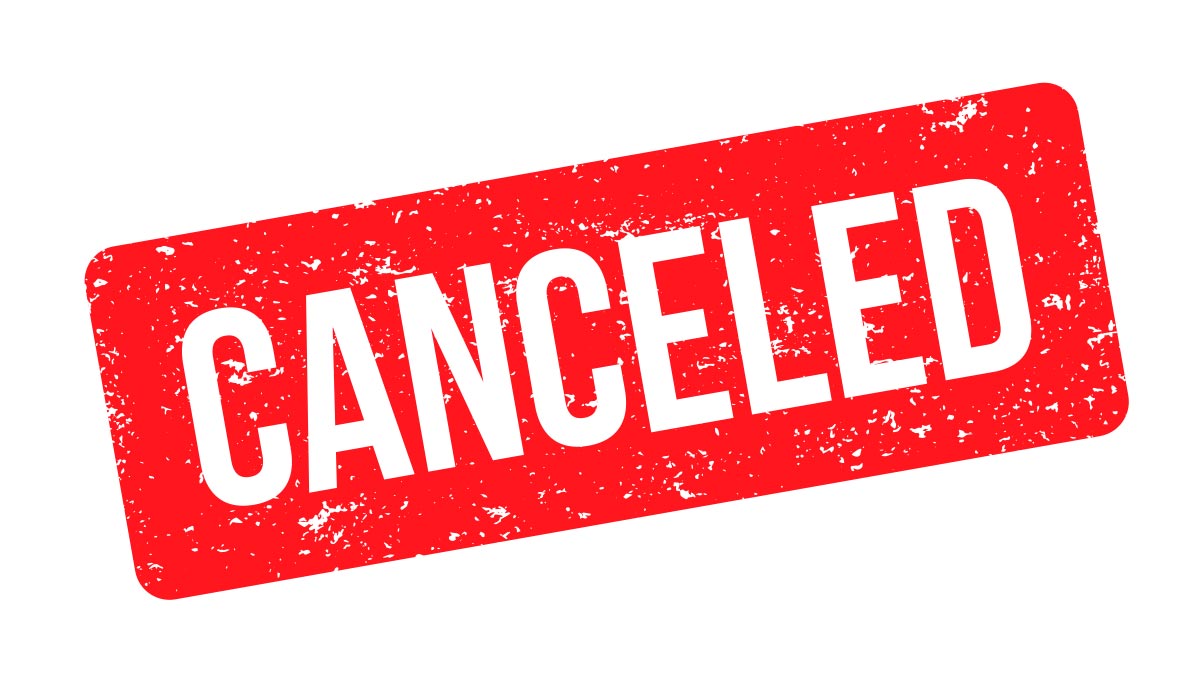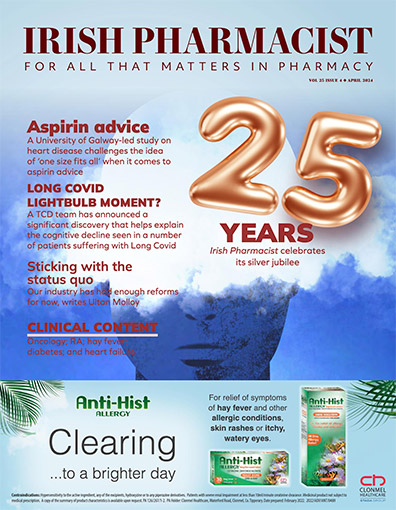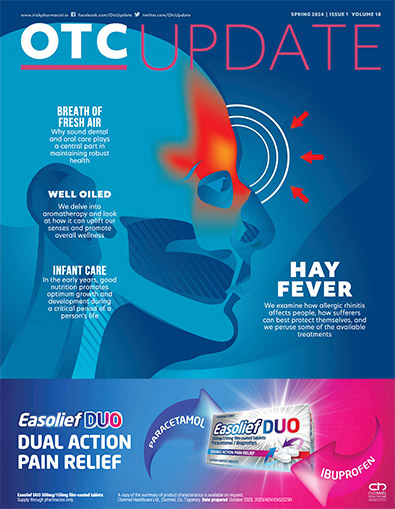Dr Des Corrigan reviews the appalling death toll revealed in data from the Drug-Related Deaths Index
The Health Research Board released data from the National Drug-Related Deaths Index (NDRDI) for 2017 in mid-December. There were 786 such deaths recorded, up from 772 in 2016. To put this appalling toll into context, there were 158 deaths due to road traffic accidents in the same year. In response, the Government invests millions of euro and promises more gardaí to reduce the toll from accidents still further, but we hear precious little about the need to reduce drug-related deaths. Admittedly, there are initiatives such as naloxone provision that have the potential to save lives but given that the vast majority of the fatalities involve drugs other than opioids, this can only have limited impact.
The big take-home message for pharmacists is that yet again, prescribed medications were implicated in the majority of ‘poisoning’ deaths. There were 376 such deaths determined by coroners as being due to the direct toxic effects of one or more drugs. In popular parlance, these are described as ‘overdose deaths’. In addition, there were 410 non-poisoning deaths where an individual had a history of drug dependence or problematic drug use, or where drugs were detected but the person died from trauma such as hanging, drowning, or a road accident, or from medical causes such as a cardiac event, liver disease or cancer. The most common drug used by those who died by hanging was cannabis, followed by cocaine. There was also an increase in poisoning deaths linked to cocaine, which mirrors media and anecdotal reports of increased cocaine use, including that of ‘crack’ in the general population.
Ecstasy (MDMA)-related deaths increased by 75 per cent to 14, half of which were due to MDMA on its own. This is unusual because most ‘poisonings’ involve polydrug use. The only other drug that similarly features on its own as being responsible for deaths is alcohol, which was deemed culpable for 61, or 16 per cent, of all poisoning deaths. Apart from alcohol, the main drug type implicated in overdose deaths was the opioid group, mainly methadone (95, or 25 per cent of all poisonings), followed by heroin (77 fatalities) and to a much lesser extent, fentanyl, where the seven recorded deaths has remained unchanged over a three-year period. It is somewhat reassuring that synthetic opioids such as the fentanyls, oxycodone and hydrocodone, which have been responsible for an avalanche of overdose deaths in North America, do not feature prominently in the Irish figures. I hope that will continue to be the case.
The headline figure for the involvement of prescribable drugs relates to alprazolam, where deaths linked to either prescription or counterfeit forms rose by 34 per cent from 2016, to 63 in 2017. Of course, other benzodiazepines and the zed drugs continue to feature prominently, with 90 deaths linked to diazepam, 42 to zopiclone, 34 to flurazepam, and five in which the designer-benzo etizolam was detected. Deaths related to antidepressants such as amitriptyline and citalopram, at nine each, were significantly lower compared to the 20-plus reported the previous year. The continued involvement of so many medicines must be of concern to those prescribing them and those dispensing them. The scary aspect is the number of drugs detected in each poisoning death, which has risen year-on-year. In 2008, only 3 per cent of all deaths involved four or more drugs but by 2017, this had increased to 18 per cent of all such deaths, or 67 in total. Polydrug use is very much the norm, accounting for 58 per cent of poisonings. Half of the deaths where alcohol was implicated involved other drugs, while in 89 per cent of methadone fatalities, benzos were also detected. All of the deaths linked to benzos, including alprazolam, involved other drugs, mainly opioids. Yet again, I would make the point that there is an opportunity for pharmacists to intervene with advice about not mixing psychoactive medicine, opioids and alcohol that will save lives.
Apart from alcohol, the main drug type implicated in overdose deaths was the opioid group, mainly methadone
(95, or 25 per cent of all poisonings), followed by heroin
(77 fatalities) and to a much lesser extent fentanyl, where the seven recorded deaths has remained unchanged over a three-year period…
One positive aspect was a welcome drop in pregabalin-related deaths, from 66 to 45 in 2017. The researchers at the HRB have looked at gabapentinoid deaths in considerable detail in an article in Drugnet Ireland, the newsletter of the Irish Focal Point that reports to the EU’s Drugs Agency (EMCDDA). Lead researcher Ena Lynn investigated whether an increase in pregabalin dispensing influenced poisoning deaths. She gathered data from the PCRS covering the GMS, LTI and DPS. In 2013, there were 612,641 prescriptions for pregabalin products and 14 pregabalin-positive deaths. By 2016, the number of scripts had risen to 755,159 and deaths had increased to 66. Strangely, the corresponding increase in prescribing of gabapentin, from 75,000 in 2003 to over 500,000 in 2017, does not appear to have resulted in any notable increase in fatalities involving that particular molecule.
Ms Lynn notes the scheduling of both gabapentinoids within the UK’s Misuse of Drugs Act from April 2019 and goes on to write that “results from our study support the consideration of similar reclassification of pregabalin in Ireland”. Ms Lynn is also the lead author of a paper from the HRB and the RCSI that has been accepted for publication in the journal Drug and Alcohol Dependence.
This looked at factors associated with pregabalin-positive deaths in this country. The study found evidence of inappropriate prescribing to those known to misuse opioids and those known to be problematic drug users.
The authors call for more guidance and training for prescribers and drug treatment providers to better inform them and the public about the potential harm arising from ‘off-label’ prescribing and of inappropriate use. Close monitoring of prescribing practices and of the diversion and misuse of pregabalin is, they claim, urgently needed. However, the fact that the gabapentinoids are not controlled drugs in the Republic makes monitoring of any black market virtually impossible for the gardaí.
It is noteworthy that the Medical Council included pregabalin in its recent warning to medical practitioners about the inappropriate and over-prescribing of benzos and zed drugs. This is a welcome intervention. Equally welcome, in my opinion, would be an initiative by the Department of Health to schedule pregabalin. No doubt the industry, some members of the profession and of the medical profession will see any attempt to restrict the over-prescribing of this drug as another ‘end of civilisation as we know it’ moment. Equally, the DoH may be influenced by the chilling effect of the Supreme Court judgement in the Bederev case. But given the number of deaths linked to pregabalin since 2013 (187), it must be possible to protect the legitimate needs of patients while reducing inappropriate over-prescribing and preventing unauthorised possession, especially where there is an intent to supply a black market. How many more deaths will be needed before the obvious action is taken?







